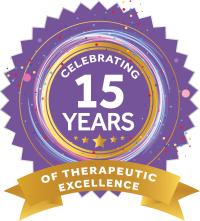 For many of us the ability to talk to our coworkers, friends, and family is something we take for granted. We speak up when we need help, whisper “I love you”, or laugh at a funny joke. But non-verbal children do not have a voice or the ability to use verbal speech effectively. For them these everyday exchanges are a constant challenge, so we put together a few communication strategy ideas that you can use.
For many of us the ability to talk to our coworkers, friends, and family is something we take for granted. We speak up when we need help, whisper “I love you”, or laugh at a funny joke. But non-verbal children do not have a voice or the ability to use verbal speech effectively. For them these everyday exchanges are a constant challenge, so we put together a few communication strategy ideas that you can use.
A few reasons why a child might have limited verbal skills
For some children verbal speech is not something that comes naturally. They may have a physiological difference that makes speech challenging, or they may have a developmental disorder, such as Autism Spectrum Disorder, that causes them to have difficulty using verbal speech to communicate effectively with others. Other children may have Childhood Apraxia of Speech or a severe phonological disorder that makes their speech so unintelligible that it is difficult for others to understand them. Given this situation, many children become frustrated with the inability to communicate, and they withdraw into themselves.
Communicating without using verbal speech
Enter Augmentative and Alternative Communication (AAC). AAC are strategies we can use to communicate in ways other than verbal speech. For children this often means using sign language, picture cards, communication boards, or a speech-generating device. Speech-Language Pathologists (SLPs) work with children and caregivers to incorporate AAC strategies into their daily routines so that they can effectively communicate in various environments.For some children, this may mean taking a flip book of picture cards with them on an outing so that they can point to a corresponding picture to indicate if they need a drink of water or to use the restroom. For others it may mean using a high tech speech-generating device, where they tap buttons on a screen to produce complex sentences during an in-class discussion. There are many different types of AAC that can be individualized depending on the student’s particular needs.
AAC communication strategies in teletherapy sessions
What about working with students at a distance? Can augmentative and alternative communication strategies needs be addressed in teletherapy sessions? Yes! Teletherapists address AAC in a variety of ways. Here are 3 to consider:
- Teletherapists collaborate with caregivers face-to-face during online sessions to discuss device programming. Online therapist coach the caregiver on effective prompts to encourage the student to utilize AAC appropriately.
- Since many students are motivated by computer activities, teletherapy sessions provide great opportunities for practice with AAC. When a student is learning to utilize their new mode of communication, the teletherapist engages them in a dynamic online game that requires the student to respond and practice using their communication device.
- Teletherapists are also uniquely positioned to engage with students and caregivers digitally, which is highly conducive for AAC communication. When practicing with picture cards, the therapist can simply display digital versions on the screen. Caregivers often take real pictures of items in the child’s environment and send them to the therapist in a text or email. The therapist then uses those familiar images digitally on the screen with the student, or they can arrange them in a printable communication booklet that the caregiver prints off for use in the community.
It’s amazing to see what is possible when individuals are able to speak for themselves! One creative SLP actually used the principles of AAC to give a voice to her dog… and guess what? It totally worked! We are super inspired by this therapist’s “pet” project that truly exemplifies the power of communication. Check it out and let us know what you think:https://youtu.be/bJCxrc7Ns_g
